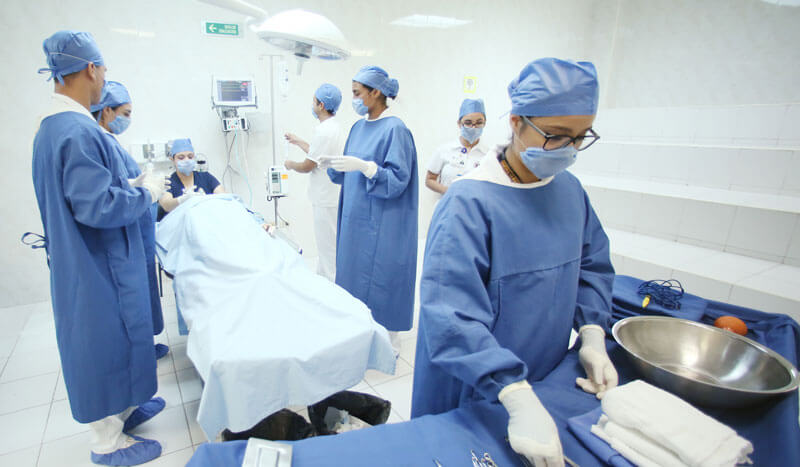Sexual life is the most important part of life. Its impact on our life are very deep. It affects our social and personal behaviour. Success in sexual life affects relationship with our sexual partner. Sexual life also affects job performance, even financial matters also. Healthy sexual life imparts positivity in our sexual relationship, job and other sphere of life. On the other hand unhealthy sexual life worsen our relationship, less efficiency in job and lost peace of mind. Such a disorder of sexual health is Premature Ejaculation, also called early ejaculation. And this is very disappointing,embarrassing condition. Female partners in such condition,remains unsatisfied, and male partners even refused to accept it they have any sexual problem due to shame or ego, whatsoever it is.
Facts About Premature Ejaculation
- Premature ejaculation is the second most common sexual problem affecting between 1 in 3 to 1 in 5 men aged 18-59.
- Some men ejaculate as soon as foreplay starts. Others ejaculate during penetration or very soon after.
- One-third to one-quarter of men with premature ejaculation also have problem of erectile dysfunction.
- PE is estimated to affect 30–40% of men at some point in their lives.
- An estimated 30%-70% of American males experience premature ejaculation.
- Erectile dysfunction is the leading risk factor for about 36% to 50% of PE.
- Lower frequency of sexual intercourse significantly relates to a higher incidence of PE.
- The National Health and Social Life Survey (NHSLS) indicate a prevalence of 30%, which is spread across all adult age groups.
- In almost 75-100% sexual activity, the experience of ejaculation occurring during sexual intercourse within 1 minute after vaginal penetration.
- The European Urology Journal conducts a large-scale survey and says that 20-30% of men between the ages of 18 and 60 report having experienced PE regularly.
- The British Journal of Urology publishes a study and observations are that early ejaculation is more common in younger men aged 18-25, with about 25% of them reporting frequent episodes.
- The American Urological Association Study found that 45% of men with PE reported anxiety and lower self-esteem related to their sexual performance.
- Global Survey of Sexual Attitudes and Behaviors (GSSAB)found that approximately 16% of men globally experience chronic premature ejaculation.
- The Journal of Sexual Medicine in a study found that Lifelong PE results in ejaculation within 30-60 seconds of penetration.
- A study showed that almost 25% of women ended a relationship due to their partners PE.
- PE tends to be under-reported by patients who do not typically seek medical help.
What is Premature Ejaculation?
Premature ejaculation is defined as a condition where a man ejaculates within one minute of vaginal penetration and is unable to control it, and causing distress to either the man or his partner. The average intravaginal ejaculatory latency time (IELT) for men with PE is under 1-2 minutes. Most men without PE ejaculate within 5-6 minutes of penetration. The Intravaginal Ejaculatory Latency Time (IELT) is the average time between vaginal penetration and ejaculation. Also if a person makes less than 60 penile strokes in one minute continuous with stopping, he may be suffering from premature ejaculation. PE can be a frustrating experience for both partners and can make sex less enjoyable. International Society of Sexual Medicine (ISSM) defined PE as a male sexual dysfunction characteristics are:
- Ejaculation which always or nearly always occurs prior to or within about 1 minute of vaginal penetration;
- Inability to delay ejaculation on all or nearly all vaginal penetration;
- Negative personal consequences, such as distress, bother, frustration and/or the avoidance of sexual encounters.
If PE causes you or your loved one, to worry or to feel stressed, then you should ask your Sexologist for help. Remember that you are not alone, and your Sexologist knows what to do. Together, you can find the underlying cause and find treatment.
Book Appointment NowTypes of Premature Ejaculation
There are two main types of Premature Ejaculation: 1.Lifelong PE (Primary) 2.Acquired PE (Secondary)
Lifelong Premature Ejaculation:-The person experiencing premature ejaculation since he became sexually active.Usually it is seen that premature ejaculation starts from the beginning of his sexual activity probably the first sexual intercourse or on masturbation as well.
Acquired Premature Ejaculation:- Acquired premature ejaculation means that the condition starts in an individual who previously have satisfactory level of ejaculatory control and his sexual relationships were successful and only now has developed premature ejaculation in the recent past.
PE can range from mild to severe, depending on how soon it occurs after penetration:
Mild: Occurs within 30 seconds to 1 minute of penetration.
Moderate: Occurs within 15–30 seconds of penetration.
Severe: Occurs before sexual activity, at the start of sexual activity, or within 15 seconds of penetration.
Four Subtype of Premature Ejaculation



Variable PE
- Variable IELT
- Normal variation Psychological Consistent History of normal ejaculation earlier

Subjective PE
- Normal IELT
- Inconsistent Subjective perception of PE despite normal ejaculation
Sign & Symptom Of Premature Ejaculation
In most cases of premature ejaculation patient does not reveals exact situation. PE associates with other sexual dysfunctions such as erectile dysfunction, decreased libido etc. These signs are common in all patient of PE:-
- A short ejaculatory latency;
- A lack of control over ejaculation;
- A lack of sexual satisfaction.
The four main interweaving sets of symptoms are:
- Short IELT,and with Control;
- Short IELT,and No Control;
- Normal IELT,and No Control;
- Normal IELT, and with Control.

Physiology of Premature Ejaculation
Ejaculation is the sudden, pleasurable release of semen through the penis. Our brain controls it i.e. your central nervous system. When you are sexually stimulated, signals are sent up through your spinal cord to your brain. When you reach a certain level of excitement, your brain tells your reproductive organs to “go!” This causes semen to be ejected through the penis called ejaculation. Ejaculation has two phases: emission and expulsion.
Phase 1:Emission:- Emission is when sperm moves from the testicles to the prostate. There it mixes with seminal fluid to make semen. The vasa deferentia are the tubes that help move the sperm from the testicles through to the prostate to the base of the penis. Parasympathetic is responsible for epithelial secretion, while the sympathetic nervous system is responsible for tonal control and contractions of smooth muscle in the seminal trait. Activated by genital or cerebral erotic stimulation. In emission phase sequential contractions of accessory sexual glands occurs. Emission is dependent on contractions of the smooth muscles of the prostate, seminal vesicles, and vas deferens, and its initiation can be voluntarily controlled. Once the semen reaches the posterior urethra, ejaculation becomes inevitable. The male organs involved in the emission process are Epididymis,Vas deferens,Seminal Vesicles,Prostate and Bulbourethral i.e. Cowper glands.
Phase 2:Expulsion:- Expulsion is a spinal cord reflex that occurs as the ejaculatory process reaches a “point of no return.”Expulsion is when the muscles at the base of the penis contract. This forces semen out of the penis. Often, ejaculation and orgasm (climax) happen at the same time.Some men climax without ejaculating. In most cases, erections go away after this phase. It is controlled by somatic and sympathetic nervous system. Activated by sensation resulting from distension of posterior urethra. In expulsion phase rhythmic contractions of pelvic muscles take place. These contractions occur rhythmically at 0.8-s intervals. These rhythmic contractions are extremely pleasurable and are part of the sensation of orgasm. A young healthy individual has 10 to 15 contractions per ejaculation. The organs involved in expulsion are smooth muscles of Bladder neck,Stratified epithelium of Urethra and Pelvipereneal striated muscles.
Pathophysiology of lifelong PE is mediated by a very complex interplay of central and peripheral serotonergic, dopaminergic, oxytocinergic, endocrinological, genetic and also epigenetic factors. Characterized by a diminished central 5-HT neurotransmission and/or a hyperfunction of 5-HT1A receptors and a hypofunction of 5-HT2C receptors causing a disturbed serotonergic modulation of the IELT. Therefore, it would have to include serotonergic and other neurotransmitter and endocrinological processes—e.g., increased oxytocinergic, and/or increased dopaminergic neurotransmission, decreased Prolactinergic functioning and increased activity of gonadotrophic factors. Also involved is the peripheral nervous system, e.g., the sympathetic and parasympathetic nervous system.Physiology of PE involve disturbance in any of the following mechanisms:
- Penile Hypersensitivity;]
- Hyperexcitable Ejaculatory Reflex;
- Hyper arousal ability;
- Genetic predisposition;
- 5-hydroxytryptamine (5-HT)-receptor dysfunction.
Some cerebral areas controls Process of Premature Ejaculation. The cerebral areas that actively participates in ejaculation are the posteromedial division of the bed nucleus of the striaterminal (BNST pm), the posterodorsal area of the amygdala (MeApd), the posterodorsal preoptic nucleus (PNpd)and the parvicellular part of the subparafascicular thalamus (SPFp). One of the most important excitatory paths includes neurons in the preoptic medial area (MPOA)that projects in the paraventricular hypothalamus (PVN). The inhibitory centres originates from neurons in the gigantocellular nuclei (Gi) and ventral raphe in the ventral medulla.
Spinal part include Preganglionic sympathetic neurons present in the intermediolateral cell column and the dorsal grey column (T12- L2) innervates the urogenital area. Preganglionic parasympathetic that innervates the urogenital area are present in intermediolateral cell column between S2-S4. Somatic neurons responsible for motor innervation of pelvipereneal and urethral sphincter are present in the Onuf nucleus on the ventral horn of S2-S4. A component to the generation of ejaculation is present in the lumbar region of L3-L4.These spinothalamic neurons segments, spinothalamic ejaculation generators, coordinates the autonomous and somatic (pudendal) processes, in order to initiate ejaculation. Activation of the autonomous nervous system and the somatic nervous system is essential for ejaculation [as is the role of non-adrenergic non-cholinergic (NANC) in modulating the activity of accessory glands].
Many Neurotransmitters take part in the process of ejaculation, which are at peripheral level are Norepinephrine, Acetylcholine, Nitric oxide, Oxytocin, Purines, Serotonin and at medullar level are GABA, Oxytocin, P substance and at central level are Serotonin, Dopamine, Opioids, Oxytocin.
 Dr. SP Singh Clinic[/caption]
Dr. SP Singh Clinic[/caption]